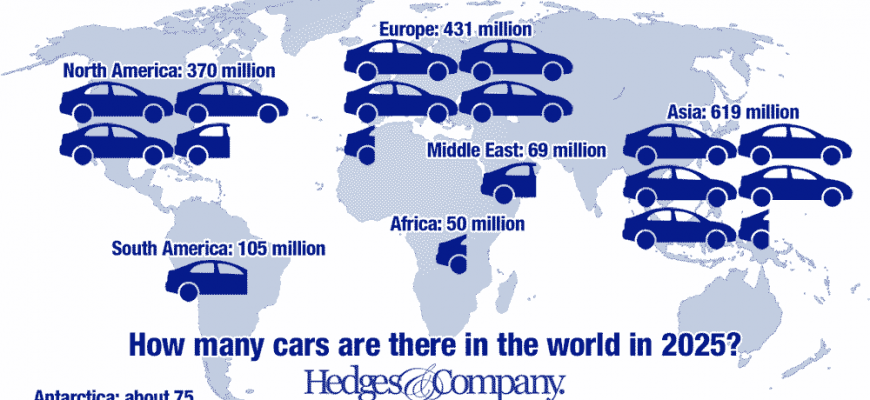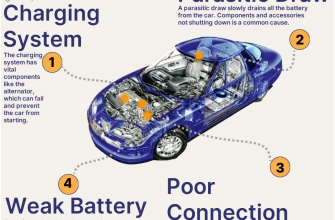The automobile industry has been a cornerstone of global development, significantly impacting economies, urbanization, and mobility. As we delve into the statistics surrounding the global car population, we uncover not just numbers, but trends that reflect societal shifts, environmental considerations, and technological advancements.
- Current Global Car Population
- Regional Breakdown
- Trends Influencing Car Population Growth
- Environmental Considerations
- Future Projections
- Challenges and Opportunities in Managing Global Car Populations
- Urban Congestion: A Pressing Dilemma
- Air Quality and Public Health
- Technological Innovations: Smart Mobility Solutions
- Shared Mobility: A New Paradigm
- Policy Implications and Future Directions
Current Global Car Population
As of 2023, the global car population is estimated to exceed 1.5 billion vehicles on the road. This figure includes passenger cars, light trucks, and SUVs, which have seen a substantial rise in ownership over the past few decades. In fact, the number of cars doubled from 2000 to 2020, highlighting a trend of increasing personal mobility in developing nations.
Regional Breakdown
- North America: The U.S. leads with approximately 270 million vehicles, translating to about 800 cars per 1,000 people. This high ownership rate underscores the car’s role in American culture.
- Europe: The European Union boasts around 300 million cars, with countries like Germany and Italy showing significant ownership levels. The EU is also pushing toward electric vehicles (EVs), aiming to reduce carbon emissions.
- Asia: China is the largest car market globally, with over 300 million vehicles. Rapid urbanization and a growing middle class have propelled this growth, making car ownership a symbol of status and convenience.
- Latin America: Countries like Brazil and Mexico contribute to a regional total of approximately 80 million vehicles, although challenges such as infrastructure and economic disparities impact growth.
- Africa: With only about 40 million vehicles, the continent has the lowest car ownership rates. However, this presents opportunities for growth as economies develop and urbanization accelerates.
Trends Influencing Car Population Growth
Several key trends are shaping the future of global car populations:
- Urbanization: Rapid urban growth in developing countries is leading to increased demand for personal vehicles.
- Technological Advancements: Innovations in electric vehicles and autonomous driving are changing the landscape, with many consumers seeking environmentally friendly options.
- Ride-Sharing Services: Platforms like Uber and Lyft are influencing ownership models, particularly in urban areas, where convenience often trumps ownership.
- Government Regulations: Stricter emissions targets and incentives for EVs are reshaping consumer choices, pushing traditional combustion engine cars toward the periphery.
Environmental Considerations
As the global car population grows, so do concerns about environmental impacts. The automotive sector is a significant contributor to greenhouse gas emissions. Transitioning to electric vehicles is seen as a crucial step in mitigating climate change. Governments worldwide are investing in charging infrastructure and offering incentives for EV purchases to promote sustainable practices in personal transportation.
Future Projections
Looking ahead, projections suggest that the global car population could reach 2 billion by 2040, depending largely on technological advancements and shifts in consumer behavior. The focus on sustainability, combined with innovative transportation solutions, will play a pivotal role in shaping the future of global mobility.
The statistics surrounding the global car population reveal more than just numbers; they reflect our changing world. As urbanization continues and technology evolves, the automobile industry must adapt to the new realities of consumer needs and environmental responsibilities; Understanding these trends not only informs policymakers and industry leaders but also empowers consumers to make informed choices about their mobility.
Challenges and Opportunities in Managing Global Car Populations
As we navigate the complexities of our growing global car population, it’s essential to recognize both the challenges and opportunities that arise. Cities around the world face increasing congestion, air quality concerns, and the pressing need for sustainable transportation solutions. However, these challenges also pave the way for innovative approaches to urban mobility.
Urban Congestion: A Pressing Dilemma
Major urban centers are grappling with traffic congestion that results in lost productivity, increased fuel consumption, and heightened emissions. Cities like Los Angeles and São Paulo experience some of the worst traffic delays globally, prompting officials to explore various mitigation strategies. From implementing congestion pricing in London to expanding public transit options in Tokyo, cities are rethinking how to manage vehicular flow effectively.
Air Quality and Public Health
The environmental impact of car emissions is a growing concern, particularly in densely populated areas. Studies indicate that air pollution from vehicles can lead to severe health issues, including respiratory diseases and heart problems. In response, many cities are investing in green technologies and policies that encourage cleaner alternatives, such as electric buses and bike-sharing programs. The shift toward electric vehicles (EVs) is not just a trend; it’s becoming a necessity for public health and environmental sustainability.
Technological Innovations: Smart Mobility Solutions
Amid these challenges, technological advancements are paving the way for smarter mobility solutions. The rise of connected vehicles, artificial intelligence, and IoT is transforming how we think about transportation. For instance, smart traffic management systems can optimize traffic flow by analyzing real-time data, reducing congestion and emissions. Moreover, the integration of autonomous vehicles promises to reshape our cities, potentially reducing the need for personal car ownership altogether.
Shared Mobility: A New Paradigm
Ride-sharing and car-sharing services have emerged as viable alternatives to traditional car ownership, particularly in urban areas. These services not only reduce the number of cars on the road but also promote more efficient use of resources. By embracing a shared economy, cities can alleviate some of the burdens associated with car ownership, such as parking and maintenance costs, all while contributing to a reduction in emissions.
Policy Implications and Future Directions
To address the multifaceted challenges of a growing car population, policymakers must implement comprehensive strategies that integrate technology, sustainability, and community engagement. This includes:
- Incentivizing Electric Vehicle Adoption: Governments can offer tax breaks, rebates, and investment in charging infrastructure to encourage the shift toward electric vehicles.
- Enhancing Public Transport: Investing in reliable and efficient public transportation networks can significantly reduce dependency on personal vehicles.
- Urban Planning Revisions: Rethinking urban layouts to prioritize walkability, bike lanes, and public spaces can foster a culture of shared mobility.
The global car population is more than just a statistic; it represents a dynamic interplay of technology, environment, and social change. As we look to the future, the challenge will be to harness innovations that promote sustainable practices while ensuring equitable access to mobility for all. By embracing a holistic view of transportation, we can pave the way for a healthier planet and more vibrant communities.
Ultimately, the path forward lies in collaboration—between governments, businesses, and citizens—to create a transportation ecosystem that reflects our values and aspirations for a better world.










The breakdown of car populations by region was particularly insightful. It’s interesting to see how different cultures approach car ownership.
I appreciate the focus on electric vehicles in Europe. It
I found the statistics fascinating, especially the growth in car ownership in developing nations. It really highlights how mobility is changing worldwide.
Great read! The trends influencing car population growth are well articulated, especially urbanization and its effects on mobility.
This article provides a comprehensive overview of the global car population and its implications on society and the environment. Very informative!